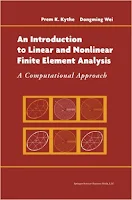Geology: A Complete Introduction
David Rothery ... 384 pages - Publisher: Teach Yourself; 1st edition (February 16, 2016)
Language: English - ISBN-10: 147360155X - ISBN-13: 978-1473601550
Language: English - ISBN-10: 147360155X - ISBN-13: 978-1473601550
Geology: A Complete Introduction is
designed to give you everything you need to succeed, all in one place.
It covers the key areas that students are expected to be confident in,
outlining the basics in clear English, and then providing added-value
features like a glossary of the essential jargon terms, links to useful
websites, and even examples of questions you might be asked in a seminar
or exam.
The book uses a structure chosen to cover
the essentials of most school and university courses on Geology. Topics
covered include the Earth's structure, earthquakes, plate tectonics,
volcanoes, igneous intrusions, metamorphism, weathering, erosion,
deposition, deformation, physical resources, past life and fossils, the
history of the Earth, Solar System geology, and geological fieldwork.
There are useful appendices of minerals, rock names and geological time.





